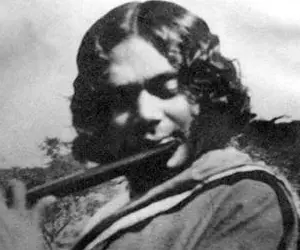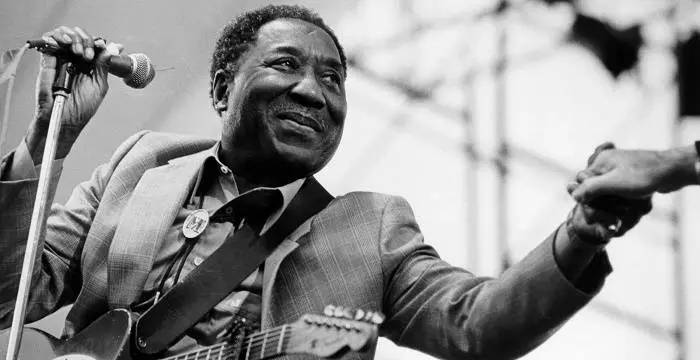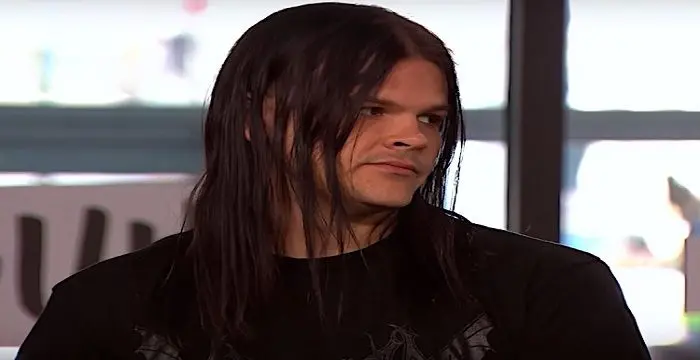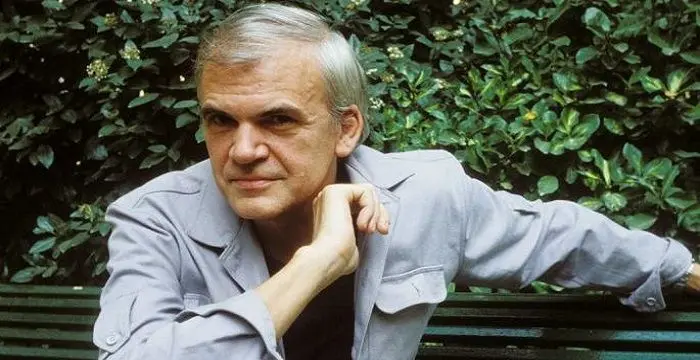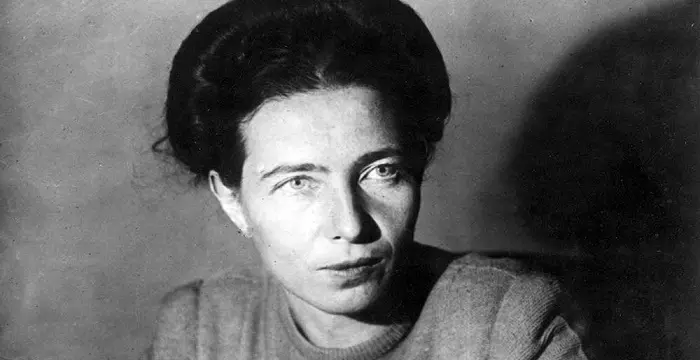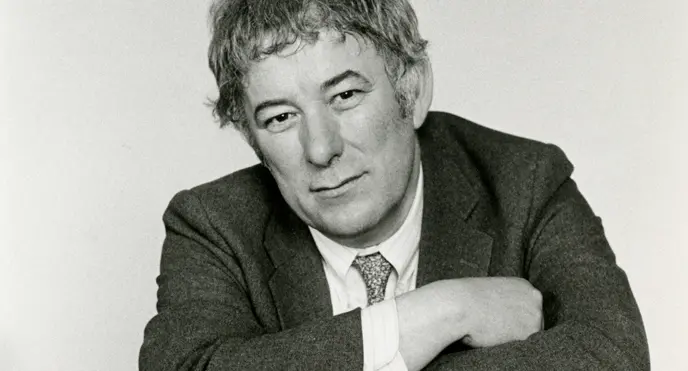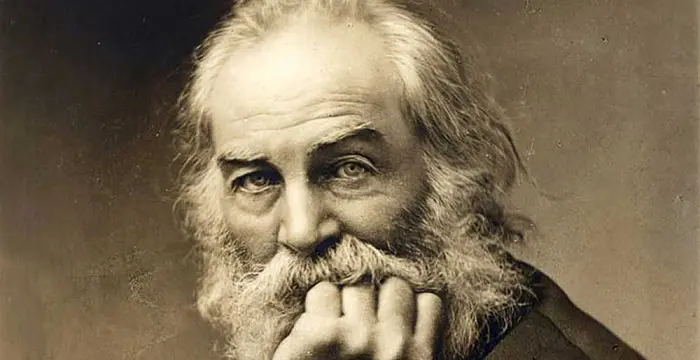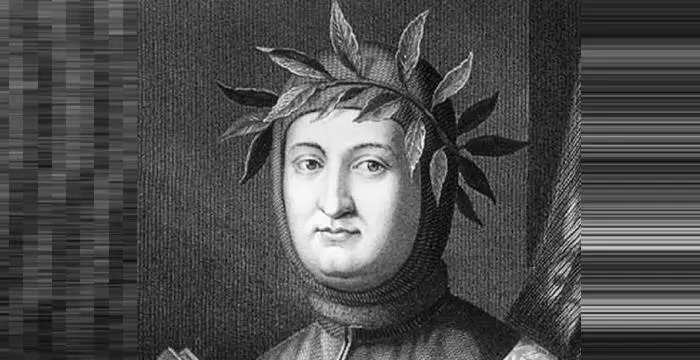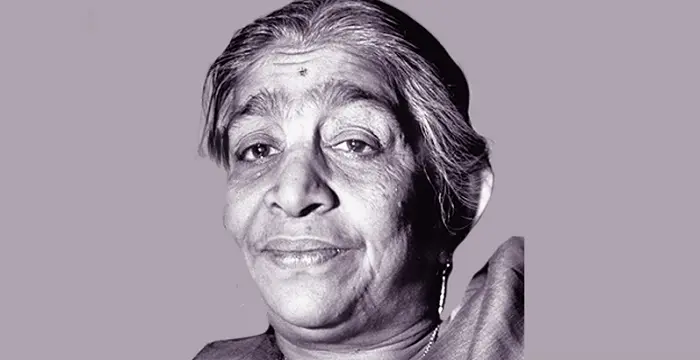Kazi Nazrul Islam - National Poet of Bangladesh, Birthday and Childhood
Kazi Nazrul Islam's Personal Details
Kazi Nazrul Islam was a Bengali poet and musician and is the ‘National Poet of Bangladesh’
| Information | Detail |
|---|---|
| Birthday | May 24, 1899 |
| Died on | August 29, 1976 |
| Nationality | Bangladeshi, Indian |
| Famous | Musicians, Poets, Novelists, National Poet of Bangladesh |
| Spouses | Pramila Devi |
| Siblings | Kazi Ali Hussain, Kazi Saahibjaan |
| Known as | Bidrohi Kobi, Mr. Sad Man, Nazrul, Rebel Poet |
| Childrens | Bulbul, Krishna Mohammad, Savyasachi and Aniruddha |
| Birth Place | Churulia |
| Born Country | India |
| Religion | Islam |
| Gender | Male |
| Father | Kazi Faqeer Ahmed |
| Mother | Zahida Khatun |
| Sun Sign | Gemini |
| Born in | Churulia |
| Famous as | National Poet of Bangladesh |
| Died at Age | 77 |
Kazi Nazrul Islam's photo
Who is Kazi Nazrul Islam?
Kazi Nazrul Islam is the ‘National Poet of Bangladesh’. He was an immensely talented person, a gifted literary genius in the field of writing poems and composing songs. He started working quite early in his life to financially support his family which also affected his education. He did numerous jobs in his childhood and later joined the armed forces after matriculation. While serving in the army, he started his literary career, most of which revolved around poetry. Initially he received appreciation and praise for his poetic collections but later the British Empire sensed a bit of hostility and rebellion in his poems and imprisoned him for over a year. During his years in prison, his rebellious and fierce attitude grew deeper and he wrote many such works. After coming out of prison, he encouraged people to fight for independence and also wrote about the weaker classes of the society. Later his focus shifted towards religion due to some personal life incidents. He faced constant struggle in his personal life due to poverty, his wife’s illness, his mental health and the death of his loved ones. Despite all difficulties he emerged out as a revolutionary who managed to leave his imprint in the spheres of music, poetry and writing.
// Famous Musicians
Ted Nugent
Ted Nugent is a hard rock musician known for his hits ‘Stranglehold’ and ‘Cat Scratch Fever’. This biography of Ted Nugent provides detailed information about his childhood, life, achievements, works & timeline.
Muddy Waters
Muddy Waters was a blues musician referred to as the 'father of modern Chicago blues.' Check out this biography to know about his childhood, family life, achievements and fun facts about him.
Travis Bacon
Travis Bacon is an American musician and actor, better known as the son of veteran actors Kevin Bacon and Kyra Sedgwick. Find more about his family, birthday, etc.
Childhood & Early Life
He was born on May 24, 1899 in Churulia village in the Burdwan district of West Bengal to Kazi Fakir Ahmed, the caretaker of the local mosque and mausoleum, and his wife, Zahida Khatun. He was the second of their four children.
After his father’s untimely death, he was nicknamed 'Dukhu Mia' by the villagers because of the hardships he faced in his early life. When he was ten, he started working in his father's place as a caretaker to support his family, as well as assisting teachers in school.
In 1910, he attended the Searsole Raj High School in Raniganj and then the Mathrun High English School. But soon he abandoned his studies due to financial crisis and started working as a cook. Later, he took up a job at a bakery and tea shop in Asansole.
In 1914, he resumed his studies and studied up to Class X. He studied Bengali, Sanskrit, Arabic, Persian literature and Hindustani classical music.
In 1917, he joined the Indian Army as a soldier and served there for three years, rising to the rank of Battalion Quarter Master (Havildar). In 1919, he published his first piece, 'The Autobiography of a Delinquent' or ‘Saogat’, while serving in the army.
Career
In 1920, he left the army and joined the 'Bangiya Mussalman Sahiya Samiti' where he wrote his first poem 'Bandhan-hara' or 'Freedom from bondage'.
In 1922, he wrote his poem titled 'Bidrohi' which was published in 'Bijli' (Thunder) magazine. The poem described a rebel passionate about his cause and received praises from people belonging to different classes of the society.
In 1922 again, his political poem ‘Anondomoyeer Agomone’ appeared in the magazine ‘Dhumketu’ which he had started publishing. This led to his arrest during a police raid at the magazine’s office. While imprisoned, he composed a large number of poems and songs until his release in December 1923.
Eventually, he became a critic of the "Khilafat" struggle and the Indian National Congress for not bargaining political independence from the British Empire. He also motivated people to fight against the British and organized the 'Sramik Praja Swaraj Dal'.
From 1926 onwards he started writing poetry and songs for the weaker sections of the society. Later in life, his works shifted from rebellion to religion. He explored 'namaz' (prayer), 'roza' (fasting) and 'hajj' (pilgrimage). He devoted works to 'Qu'ran' and the life of Islam's prophet 'Muhammad'.
In 1933, he published a collection of essays entitled 'Modern World Literature' which had different themes and styles of literature. He also published 800 songs based on classical ragas, kirtans and patriotic songs in 10 volumes.
In 1934, he got involved in the Indian theatre and motion pictures, and debuted in a movie based on Girish Chandra's story called 'Bhakta Dhruva'.
In 1939, he started working for the Calcutta radio and produced music such as 'Haramoni' and 'Navaraga-malika'. In 1940, he started working as a chief editor for 'Nabayug', founded by A.K. Fazlul Huq.
Major Works
His most notable works were his rebellious poems such as 'Bodhan', Shat-il-Arab', 'Kheya-parer Tarani' and 'Badal Prater Sharab' etc. which received critical appreciation from all over.
In 1926, he wrote one of his most famous poems titled 'Daridro' ('Pain or Poverty') which received appreciation from the classes and the masses.
In 1928, he became a lyricist, composer and music director for 'His Master's Voice Gramophone Company'. One of his biggest works in the industry was writing songs and directing music for a bioepic play named 'Siraj-ud-Daula'.
Awards & Achievements
In 1945, he received the Jagattarini Gold Medal from the University of Calcutta for his work in Bengali Literature.
In 1960, he was awarded the Padma Bhushan, one of the highest civilian honors of the Republic of India.
He was conferred the title of 'national poet' and awarded the 'Ekushey Padak' by the Government of Bangladesh.
Personal Life & Legacy
In 1921, he got engaged to Nargis, the niece of a well-known Muslim publisher, Ali Akbar Khan, in Daulatpur. On the day of wedding, he walked away from the ceremony upon hearing an unreasonable condition of Ali Akbar Khan.
In 1921, he met a young Hindu woman, Pramila Devi on his visit to Comilla. They fell in love and later got married in 1924.
His first son, Krishna Mohammad, died prematurely while his second son, Bulbul, died of smallpox. He had two more sons, Savyasachi and Aniruddha. In 1939, his wife fell ill and was paralyzed from waist down.
In 1941, he was shaken by the death of Rabindranath Tagore. Within months, he himself fell seriously ill and gradually began losing his power of speech. Eventually, his mental dysfunction intensified and he was admitted to a mental asylum in 1942.
In 1952, he was transferred to a mental hospital in Ranchi and then to Vienna for treatment where he was diagnosed with Pick's disease. He returned to India in 1953 and in 1962 his wife died while he remained in intensive medical care.
On August 29, 1976, he died in Dhaka, Bangladesh. He was buried beside a mosque on the campus of the University of Dhaka.
// Famous Novelists
Charles Bukowski
Charles Bukowski was a German-born American novelist, short story writer and poet. With this biography, learn in details about his childhood, life, works, career and timeline
Milan Kundera
Milan Kundera is a Czech-born French writer known for his erotic and political writings. This biography of Milan Kundera provides detailed information about his childhood, life, achievements, works & timeline.
Simone de Beauvoir
Simone de Beauvoir was an eminent French writer, intellectual, activist, and philosopher. This biography profiles her childhood, life, thoughts, achievements and timeline.
Kazi Nazrul Islam biography timelines
- // 24th May 1899He was born on May 24, 1899 in Churulia village in the Burdwan district of West Bengal to Kazi Fakir Ahmed, the caretaker of the local mosque and mausoleum, and his wife, Zahida Khatun. He was the second of their four children.
- // 1910In 1910, he attended the Searsole Raj High School in Raniganj and then the Mathrun High English School. But soon he abandoned his studies due to financial crisis and started working as a cook. Later, he took up a job at a bakery and tea shop in Asansole.
- // 1914In 1914, he resumed his studies and studied up to Class X. He studied Bengali, Sanskrit, Arabic, Persian literature and Hindustani classical music.
- // 1917 To 1919In 1917, he joined the Indian Army as a soldier and served there for three years, rising to the rank of Battalion Quarter Master (Havildar). In 1919, he published his first piece, 'The Autobiography of a Delinquent' or ‘Saogat’, while serving in the army.
- // 1920In 1920, he left the army and joined the 'Bangiya Mussalman Sahiya Samiti' where he wrote his first poem 'Bandhan-hara' or 'Freedom from bondage'.
- // 1921In 1921, he got engaged to Nargis, the niece of a well-known Muslim publisher, Ali Akbar Khan, in Daulatpur. On the day of wedding, he walked away from the ceremony upon hearing an unreasonable condition of Ali Akbar Khan.
- // 1921 To 1924In 1921, he met a young Hindu woman, Pramila Devi on his visit to Comilla. They fell in love and later got married in 1924.
- // 1922In 1922, he wrote his poem titled 'Bidrohi' which was published in 'Bijli' (Thunder) magazine. The poem described a rebel passionate about his cause and received praises from people belonging to different classes of the society.
- // 1922 To Dec 1923In 1922 again, his political poem ‘Anondomoyeer Agomone’ appeared in the magazine ‘Dhumketu’ which he had started publishing. This led to his arrest during a police raid at the magazine’s office. While imprisoned, he composed a large number of poems and songs until his release in December 1923.
- // 1926From 1926 onwards he started writing poetry and songs for the weaker sections of the society. Later in life, his works shifted from rebellion to religion. He explored 'namaz' (prayer), 'roza' (fasting) and 'hajj' (pilgrimage). He devoted works to 'Qu'ran' and the life of Islam's prophet 'Muhammad'.
- // 1926In 1926, he wrote one of his most famous poems titled 'Daridro' ('Pain or Poverty') which received appreciation from the classes and the masses.
- // 1928In 1928, he became a lyricist, composer and music director for 'His Master's Voice Gramophone Company'. One of his biggest works in the industry was writing songs and directing music for a bioepic play named 'Siraj-ud-Daula'.
- // 1933In 1933, he published a collection of essays entitled 'Modern World Literature' which had different themes and styles of literature. He also published 800 songs based on classical ragas, kirtans and patriotic songs in 10 volumes.
- // 1934In 1934, he got involved in the Indian theatre and motion pictures, and debuted in a movie based on Girish Chandra's story called 'Bhakta Dhruva'.
- // 1939 To 1940In 1939, he started working for the Calcutta radio and produced music such as 'Haramoni' and 'Navaraga-malika'. In 1940, he started working as a chief editor for 'Nabayug', founded by A.K. Fazlul Huq.
- // 1939His first son, Krishna Mohammad, died prematurely while his second son, Bulbul, died of smallpox. He had two more sons, Savyasachi and Aniruddha. In 1939, his wife fell ill and was paralyzed from waist down.
- // 1941 To 1942In 1941, he was shaken by the death of Rabindranath Tagore. Within months, he himself fell seriously ill and gradually began losing his power of speech. Eventually, his mental dysfunction intensified and he was admitted to a mental asylum in 1942.
- // 1945In 1945, he received the Jagattarini Gold Medal from the University of Calcutta for his work in Bengali Literature.
- // 1952 To 1962In 1952, he was transferred to a mental hospital in Ranchi and then to Vienna for treatment where he was diagnosed with Pick's disease. He returned to India in 1953 and in 1962 his wife died while he remained in intensive medical care.
- // 1960In 1960, he was awarded the Padma Bhushan, one of the highest civilian honors of the Republic of India.
- // 29th Aug 1976On August 29, 1976, he died in Dhaka, Bangladesh. He was buried beside a mosque on the campus of the University of Dhaka.
// Famous Poets
Charles Bukowski
Charles Bukowski was a German-born American novelist, short story writer and poet. With this biography, learn in details about his childhood, life, works, career and timeline
Seamus Heaney
Nobel Laureate Seamus Heaney was an Irish poet, playwright and translator. Know about his profile, childhood, life and timeline in the biography below.
Walt Whitman
Walt Whitman was an American poet, journalist and humanist. Read this brief biography to find more on his life & timeline.
Francesco Petrarch
Fêted as the “Father of Humanism”, Francesco Petrarch is one of the most influential literary figures the world has ever had. Explore this biography to know about his childhood, life and timeline.
Sarojini Naidu
Sarojini Naidu was an Indian freedom fighter and poet. Read this brief biography to find more on her life.
Abdolkarim Soroush
Abdolkarim Soroush is a reformer, thinker, and Rumi scholar belonging to Iran. Soroush is also a prominent figure in Iran’s religious movement. This biography provides detailed information about her childhood, life, achievements, works & timeline.
Kazi Nazrul Islam's FAQ
What is Kazi Nazrul Islam birthday?
Kazi Nazrul Islam was born at 1899-05-24
When was Kazi Nazrul Islam died?
Kazi Nazrul Islam was died at 1976-08-29
Where was Kazi Nazrul Islam died?
Kazi Nazrul Islam was died in Dhaka
Which age was Kazi Nazrul Islam died?
Kazi Nazrul Islam was died at age 77
Where is Kazi Nazrul Islam's birth place?
Kazi Nazrul Islam was born in Churulia
What is Kazi Nazrul Islam nationalities?
Kazi Nazrul Islam's nationalities is Bangladeshi, Indian
Who is Kazi Nazrul Islam spouses?
Kazi Nazrul Islam's spouses is Pramila Devi
Who is Kazi Nazrul Islam siblings?
Kazi Nazrul Islam's siblings is Kazi Ali Hussain, Kazi Saahibjaan
Who is Kazi Nazrul Islam childrens?
Kazi Nazrul Islam's childrens is Bulbul, Krishna Mohammad, Savyasachi and Aniruddha
What is Kazi Nazrul Islam's religion?
Kazi Nazrul Islam's religion is Islam
Who is Kazi Nazrul Islam's father?
Kazi Nazrul Islam's father is Kazi Faqeer Ahmed
Who is Kazi Nazrul Islam's mother?
Kazi Nazrul Islam's mother is Zahida Khatun
What is Kazi Nazrul Islam's sun sign?
Kazi Nazrul Islam is Gemini
How famous is Kazi Nazrul Islam?
Kazi Nazrul Islam is famouse as National Poet of Bangladesh
